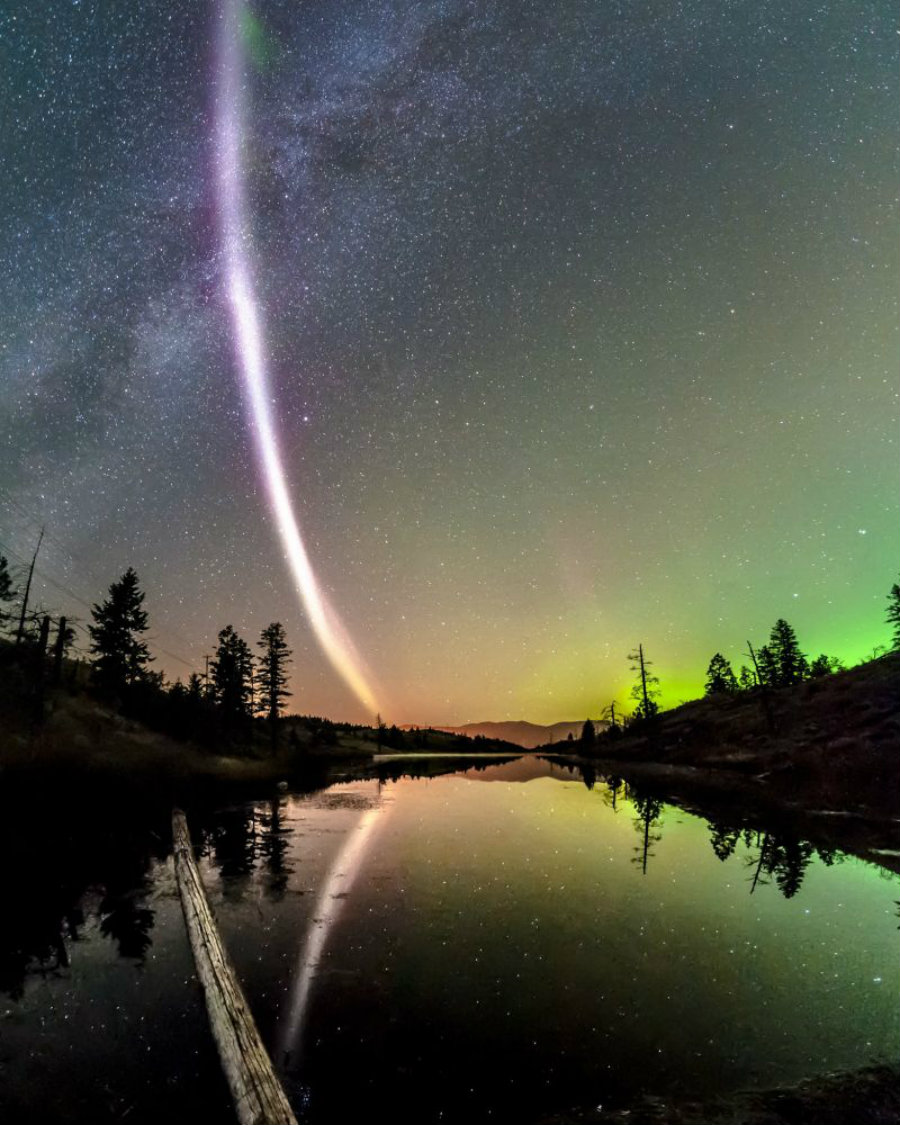The beautiful atmospheric phenomenon “Steve” was first documented by a Facebook Group last year. Steve is so strange that it still doesn’t have a formal description. Scientists don’t know what its causes are, but it has certainly attracted a lot of people.
Steve was discovered thanks to the works of aurora enthusiasts and atmospheric scientists. Steve is similar to an aurora with a ribbon of purple and green lights; however, it is not an aurora.

“It is amazing how a beautiful natural phenomenon, seen by observant citizens, can trigger scientists’ curiosity”, said Roger Haagmans of the ESA. “It turns out that Steve is actually remarkably common, but we hadn’t noticed it before”
‘Steve’
Thanks to social media, there are already more than 50 observer reports since last year, when it was first discovered. The “Alberta Aurora Chasers” decided to call it “Steve” in honor of the children’s movie “Over the Hedge,” where a character arbitrarily uses “Steve” to describe an object he is not sure about.
Thanks to their curiosity, now scientists from NASA, the European Space Agency (ESA) and the University of Calgary are working eagerly to know what this phenomenon is all about. They are even trying to make Steve an acronym for “Strong Thermal Emission Velocity Enhancement,” which is a description based on preliminary satellite observations.

Steve is 25 kilometers wide
Steve emits a mostly purple light with some green and short-lived “picket fence” structures. It appears in the northern hemisphere along latitudes similar to Calgary, Alberta. It is a 25 to 30 kilometer (15 to 18 miles) wide arc that aligns east-west and extends for hundreds, maybe thousands, of miles.
At first, it was thought to be some kind of proton arc. However, proton aurorae aren’t visible to the naked eye, so it should have been something else. Scientists also noted that Steve could last for as long as an hour or more. It is seasonal since it vanishes from October to February.
Eric Donovan – an associate professor in the Department of Physics and Astronomy at the University of Calgary – has shown a lot of interest in this newly discovered phenomenon. He is using the ESA’s Swarm magnetic field mission to know more about it.
With this technology, it is possible to take high-precision and high-resolution measurements of the strength, direction, and changes in the Earth’s magnetic field, which make auroras appear. One of the Swarm’s satellites flew straight through Steve and according to the collected data, it shows very clear changes.
“The temperature 300km above Earth’s surface jumped by 3000°C and the data revealed a 25km-wide ribbon of gas flowing westwards at about 6km/s compared to a speed of about 10m/s either side of the ribbon.”
3000 ºC seems like a lot, but Donovan said that the temperature spike was correct. He also said he is working with his colleague, Bea Gallardo-Lacourt, to know the conditions under which Steve occurs. They are not sharing their entire research at the moment. They assure it is a different atmospheric phenomenon with an unusual spectral mix and beauty.
Source: Phys.org
